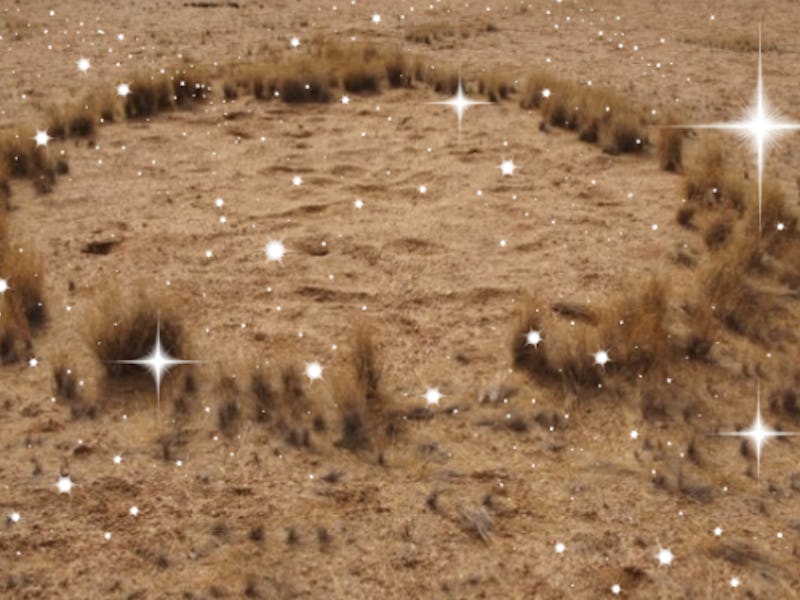The Secret Behind Mysterious African Fairy Circles Revealed by Scientists

The so-called “fairy circles” of Namibia have long been sites of mystical intrigue and scientific controversy. Millions of these circular patterns of red dirt and patchy dry plants dot the Namib desert, ranging in circumference from 12 feet all the way to a massive 114 feet. Historically, their existence has been credited to aliens, gods, and dragon breath, but recent research pinpoints another culprit: thirsty and competitive plants.
In a recent paper published in Journal of Geophysical Research, researchers from Indiana University-Purdue University Indianapolis argue that the reason these strange circular plots, consisting of a bare inner circle and a raised outer circle, exist is because of “self-organization theory.” This is the idea that circular vegetation patterns emerge because plants in dry regions use the empty inner circle as a natural water reservoir, which then the grass on the raised edges of the circle can tap into to survive.
That these circles emerge because of how plants have adapted to deserts stands contrary to the claim of other scientists who argue that the strange spots of arid soil arise because of termites.
A plot of fairy circles.
The scientists behind the study came to their thirsty-plant conclusion after analyzing the infiltration rate, soil moisture, grass biometrics, and sediment grain size distribution of the fairy circles, together with the distance between circles. This showed them that water was absorbed more quickly on the inner portion of the circles and that the roots of the grass on the outside of circles were larger than the grass exactly on the ring. The researchers concluded that the grass grows in a way that its roots are on the inner side of the ring, competing for water. When rain does come, the roots can slurp it up because the water fills the dry inner circle, flowing up to its edge.
Besides solving once and for all the mystery of the origin of these circles, the scientists hope to leverage their research to better understand the “underlying dynamics of water-limited ecosystems.”
While these rings are vastly different than the fairy circles of Europe (those are simply a ring of mushrooms on grass), they are not completely unique in the world: In March 2016, scientists discovered similar arid rings in Australia, the only other place besides the Namib desert where they have been observed.